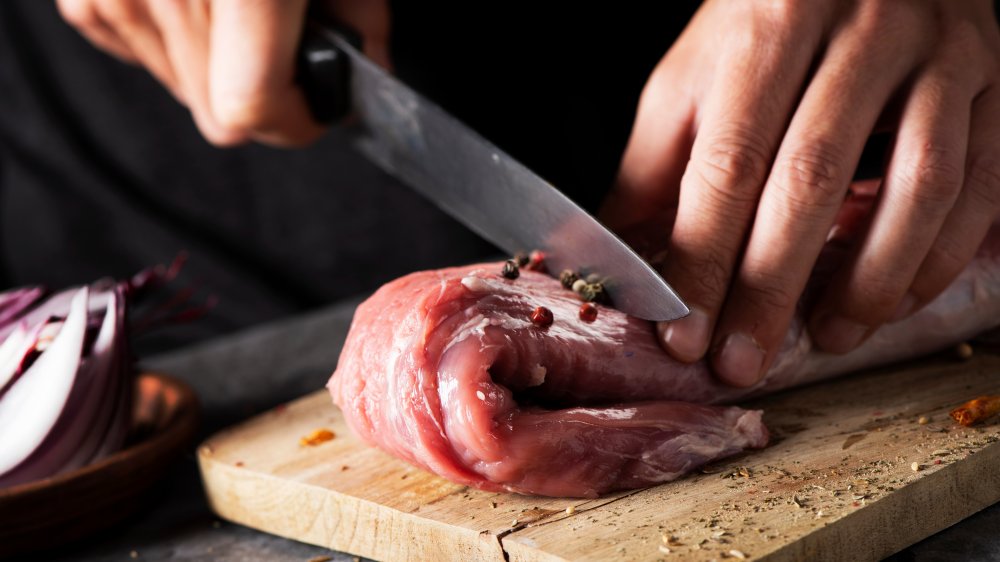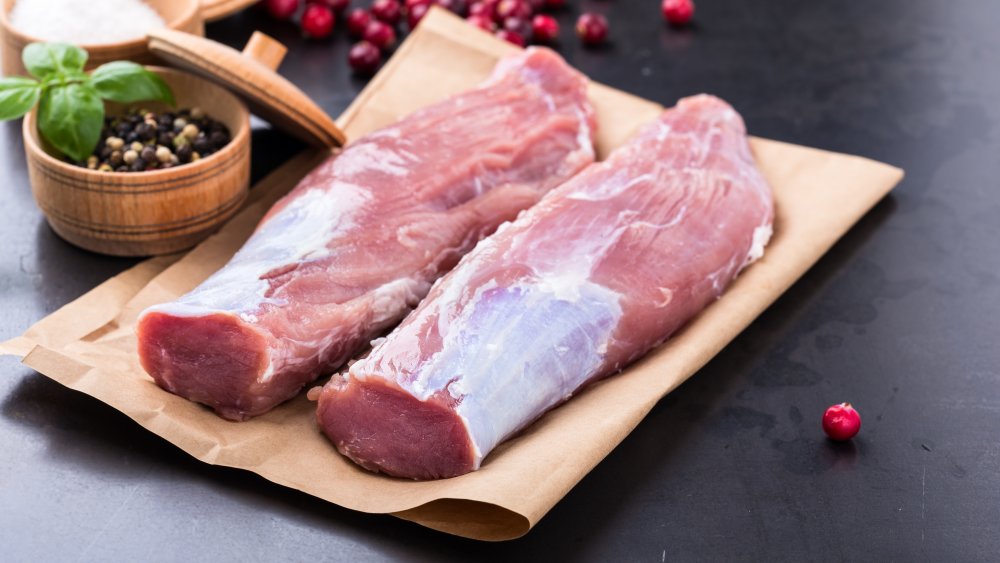The Real Difference Between Pork Loin And Pork Tenderloin
When a recipe calls for a cut of meat, there is always the possibility for confusion at the butcher because different meats can be referred to in different ways. When it comes to beef, for example, a T-bone steak can also be known as a porterhouse, and a ribeye can also be called a Delmonico (via Gourmet Sleuth).
This extends to pork as well. While pork loin and pork tenderloin sounds like they might be the same thing, they're actually two different cuts of meat with different characteristics. Pork loin comes from in between the spine and the ribs (via Taste of Home). It's typically boneless and is trimmed to have a fat cap on the top of the cut, which helps to ensure that the meat stays moist as it cooks. Pork loin is often grilled or roasted in the oven, and like all pork, it should be cooked to an internal temperature of 145 degrees Fahrenheit.
The characteristics of a pork tenderloin
The tenderloin, on the other hand, comes from above the spine and is one of the most tender (hence the name) cuts because it isn't a muscle that moves a lot. This cut of meat on cows is often referred to as the filet mignon.
The tenderloin is a longer cut than the loin, and thinner as well. Sometimes you'll see them double packaged because they are smaller cuts, typically around a pound each, whereas the loin can be about four or five times that weight. Because of its smaller size, the tenderloin cooks quicker and is often served cut into medallions. Because it doesn't feature the same fat cap that the loin does (although it can contain intramuscular fat marbling), it can dry out quickly if overcooked. One way to prevent this from happening is by letting the tenderloin marinate overnight before cooking, which keeps it juicy.

